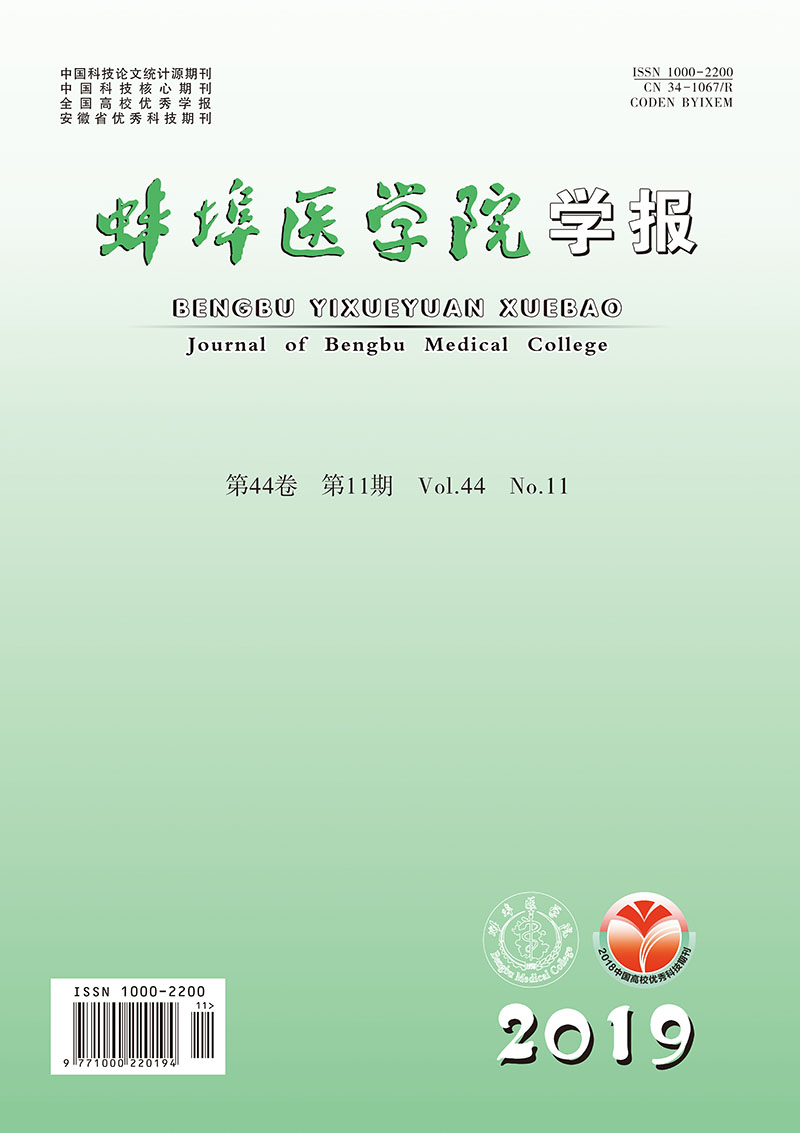-
随着麻醉数字化、人工智能化的快速发展,使用自动控制技术,将精准麻醉控制变成了现实。近来,我们应用闭环靶控系统启动精准麻醉在老年病人中进行无痛肠镜检查。在无痛肠镜检查操作中,丙泊酚是最常使用的一种药物,起效快,半衰期短,镇静作用强,然而如果使用药物剂量过大、手工推注速度过快及麻醉深度掌握不严格的情况下,极易导致病人血流动力学的剧烈波动和呼吸功能严重抑制,尤其对于老年病人,往往伴有心、脑血管疾病,更要引起足够重视,因此在严密监测病人一般生命体征的基础上,有必要进行麻醉深度监测。本研究采用了丙泊酚闭环靶控输注技术应用于老年病人无痛肠镜中,麻醉深度监测以脑电双频指数(BIS)为指标,检查过程中靶控丙泊酚输注系统自动进行调整,实现了人机对话,为精准麻醉控制提供可能性。
HTML
-
本研究经蚌埠医学院第一附属医院医学伦理委员会批准,且同病人及家属签署麻醉知情同意书。选择2017年11月至2018年3月来我院消化内科就诊,拟行无痛肠镜检查的病人,共40例,ASAⅠ~Ⅱ级,年龄60~75岁,男22例,女18例。剔除标准:(1)严重肝肾功能疾病;(2)服用精神、神经药物或精神异常史;(3)对麻醉药物过敏史;(4)阻塞性睡眠性呼吸暂停及困难气道;(5)急性上呼吸道感染、哮喘及发热;(6)未禁食及胃肠道潴留;(7)未控制的严重高血压、心律失常和心力衰竭等。按随机数字表法分为:观察组(S组)和对照组(D组),每组20例。
-
所有接受无痛肠镜检查病人2 d前进行流质饮食,检查当天禁食6h,禁水2h,检查前8h口服复方聚乙二醇散,进行肠道准备。病人入室后取左侧卧位,开放静脉通道,鼻导管吸氧,充分给氧去氮,氧流量设为3~4L/min,常规监测生命体征,包括:血压(BP)、心电图(ECG)、心率(HR)、血氧饱和度(SpO2),S组连接BIS监测仪(美国Aspect公司的BIS麻醉深度检测仪)监测BIS值,连接丙泊酚闭环靶控输注系统(威利方舟靶控输注TCI-Ⅲ型组合式靶控注射泵),输注方式选择Marsh药代动力学模型,设定血浆靶控浓度为6μg/mL。闭环靶控输注丙泊酚(批号:X13053B,AstraZeneca公司,意大利),设定BIS值参数目标为55±5,待BIS值达到目标参数55时,开始进行肠镜检查操作。操作过程中,如果BIS值≥60且持续时间超过10s,丙泊酚靶浓度将自动升高0.1μg/mL,如果BIS值≤50且持续时间超过10s,丙泊酚靶浓度将自动降低0.1μg/mL。当肠镜抵达回盲部位时终止丙泊酚靶控输注。D组静脉注射丙泊酚2~3 mg/kg,注药时间为45~60 s,待病人睫毛反射消失、肢体运动及意识消失后停止给药,开始进行肠镜操作。操作过程中如果病人出现体动反应,则追加推注丙泊酚0.5~1mg/kg。
如果病人在肠镜检查过程中出现呼吸功能抑制,SpO2 < 90%,或呼吸暂停>15s,立即给予人工辅助通气(托起下颌,面罩纯氧通气甚至辅助或控制呼吸);如果血流动力学出现剧烈波动,平均动脉压(MAP) < 60mmHg或HR < 50次/分,给予麻黄碱(5~10mg)或者阿托品(0.25~0.5mg)静脉注射处理,肠镜检查完成后送入麻醉恢复室,待病人完全清醒且定向力恢复良好,生命体征平稳后,方可离院。
-
观察并记录病人入室后(T0)、麻醉成功后(T1)、肠镜进入到回盲部位时(T2)以及检查后病人苏醒时(T3)的MAP、HR、SpO2、BIS值。观察并记录2组病人肠镜检查时间(进镜即刻至肠镜退出即刻)、苏醒时间(肠镜检查结束至呼之睁眼说话的时间)以及丙泊酚的使用总量。观察术中病人的体动、呼吸功能抑制的发生情况及镇静/麻醉后离院评分和术后头晕、恶心呕吐等不良反应的情况。
-
采用方差分析、q检验、t检验和χ2检验。
1.1. 一般资料
1.2. 麻醉方法
1.3. 观察指标
1.4. 统计学方法
-
2组病人的年龄、性别、体质量及无痛肠镜检查时间等指标差异均无统计学意义(P>0.05)(见表 1)。
分组 n 年龄/岁 男 女 体质量/kg 肠镜检查时间/min D组 20 64.45±3.47 11 9 60.45±5.38 25.80±2.35 S组 20 63.45±4.12 11 9 59.20±2.95 25.90±1.86 t — 0.83 0.00* 0.91 0.15 P — >0.05 >0.05 >0.05 >0.05 *示χ2值 -
与T0相比较,2组病人在T1、T2时间点MAP均降低(P < 0.01),HR减慢(P < 0.01),S组在T1、T2时间点BIS值降低(P < 0.01),BIS值稳定于55左右;在T3时间点2组病人HR、SpO2恢复至T0时水平(P>0.05),S组BIS值也恢复至T0时水平(P>0.05)。其中,D组在T1、T2时间点MAP降低、HR减慢较S组更明显(P < 0.01)。D组在T1时间点SpO2明显低于S组(P < 0.01)(见表 2)。
指标 分组 n T0 T1 T2 T3 F P MS组内 MAP D组 20 89.30±3.61 72.05±1.54** 73.00±1.81** 86.50±2.06**△△## 255.91 < 0.01 5.731 S组 20 91.45±2.93 76.30±1.30** 75.90±1.65** 86.65±1.50**△△## 270.97 < 0.01 3.812 t — 2.00 10.38 6.10 0.31 — — — P — < 0.05 < 0.01 < 0.01 >0.05 — — — HR D组 20 86.75±3.13 68.45±3.12** 70.00±3.08** 86.25±2.36△△## 299.19 < 0.01 8.647 S组 20 87.25±3.31 74.70±2.74** 75.30±2.56** 86.00±2.36△△## 140.84 < 0.01 7.647 t — 0.42 6.95 7.53 0.35 — — — P — >0.05 < 0.01 < 0.01 >0.05 — — — SpO2 D组 20 98.00±1.34 94.05±1.15** 96.60±2.11**△ 98.10±1.17△△ ## 31.93 < 0.01 2.235 S组 20 97.65±1.27 96.40±1.14** 97.40±1.50△ 97.85±0.99△△ 7.08 < 0.01 1.536 t — 0.79 6.32 1.33 0.69 — — — P — >0.05 < 0.01 >0.05 >0.05 — — — BIS S组 20 92.10±1.97 54.85±1.46** 55.25±1.25** 91.45±2.33△△ ## 2678.124 < 0.01 3.251 q检验:与T0时间点比较**P < 0.01;与T1时间点比较△P < 0.05, △△P < 0.01;与T2时间点比较##P < 0.01 -
病人术中丙泊酚用量和苏醒时间S组均明显低于D组(P < 0.01),2组镇静/麻醉后离院评分差异无统计学意义(P>0.05)(见表 3)。
分组 n 术中丙泊酚用量/mg 苏醒时间/min 镇静/麻醉后离院评分/分 D组 20 160.75±8.90 8.40±0.77 9.00±0.73 S组 20 127.45±3.79 5.53±0.73 9.30±0.57 t — 15.40 12.08 1.45 P — < 0.01 < 0.01 >0.05 -
2组病人在术中体动、术后头晕、术后恶心呕吐、术中呼吸抑制的发生率方面差异均无统计学意义(P>0.05)(见表 4)。
分组 n 术中体动 术后头晕 术后恶心、
呕吐术中呼吸抑制 D组 20 2(10.00) 3(15.00) 1(5.00) 3(15.00) S组 20 1(5.00) 2(10.00) 1(5.00) 1(5.00) χ2 — 0.00 0.00 0.53 0.28 P — >0.05 >0.05 >0.05 >0.05
2.1. 2组病人的一般情况比较
2.2. 不同时间点病人MAP、HR、SpO2、BIS值的比较
2.3. 2组病人术中丙泊酚用量、病人苏醒时间及镇静/麻醉后离院评分的比较
2.4. 2组病人围术期不良反应比较
-
随着麻醉人工智能时代的到来,“精准麻醉”已成为“精准医学”理念下实现麻醉临床实践的重要内容。“精准麻醉控制”的最重要的一环就是麻醉药物精准给予,闭环麻醉靶控系统则是基于病人个体化设定麻醉参数、给予精确药物、实时精准监测麻醉深度与自动控制闭环药物供给于一体的自动导航精准麻醉管理系统,为控制精准麻醉提供了可行性[1-3]。
在临床麻醉中“闭环靶控系统”包括一整套麻醉系统,其构成包括一个“中枢”(即中央处理装置其内合并有内置算法),一个“目标效应”(能够被靶控的变量),一个“执行装置”(即药物输注系统,如输液泵),这些基础部件与一个反馈系统连接起来,该反馈系统可自动调节药物的输注,维持预先为变量设定的目标值水平,不需要人为调控,各个元素整合起来共同构成一个完整的系统[4-5]。当今麻醉临床实践中,已成功应用于临床的闭环靶控系统有:基于BIS反馈的闭环靶控镇静系统[6-8]。镇静药物的闭环靶控在麻醉临床实践中较为常用,尤其是使用BIS反馈并导航的丙泊酚靶控输注,将药物输注泵与BIS监测装置相连,通过设定BIS靶控数值范围(40~60的某个具体数值),反馈调节泵药物的输注速度,保持BIS值始终稳定在设定的范围内,如果高于该范围系统则加快输注速度,低于该范围则自动减慢输注的速度,从而实现镇静药物的自动导航过程[9-10]。
无痛肠镜检查技术是将镇静麻醉和肠镜检查有机结合起来的一项操作技术,此技术的应用极大降低了病人在肠镜检查过程中出现的各种不适感和恐惧感,但同时也存在着一定的麻醉安全隐患,比如:呼吸功能抑制、血流动力学剧烈波动等,并且无痛肠镜操作多在门诊胃肠镜中心进行,较手术室内完善的抢救设备及用品还有所欠缺,这也进一步增加了麻醉安全的风险[11]。特别是目前病人就诊量日益增多,更应引起麻醉医生的高度警惕。
目前,无痛肠镜检查中最常用的药物是丙泊酚,是一种快速短效的静脉麻醉药,其临床作用起效快、半衰期短、苏醒迅速而平稳,镇静作用强,不良反应少,在胃肠镜检查中使用广泛。但是丙泊酚在使用剂量或推注速度掌握不当时则可能抑制呼吸功能和循环功能,严重时可导致窒息、BP下降、HR减慢,甚至危及生命,所以在使用丙泊酚时必须严格监护病人的呼吸、BP、脉搏、SpO2等指标,同时给予吸氧及准备好急救复苏的各项条件和措施,麻醉医师对此要高度重视,严格执行。
近年来麻醉深度监测也受到较为广泛关注,BIS监测能较好反映大脑皮质功能状态及变化,作为可靠的麻醉深度监测应用于临床检查。病人麻醉深度与围术期并发症的发生率和术后中晚期死亡率密切相关,研究[12]表明,老年病人对麻醉药物的敏感性更高,术中更易出现BIS值降低。BIS与大多数麻醉药物产生的镇静深度具有相关性。在静脉全麻药中,丙泊酚的麻醉深度同BIS值具有较好的相关性,能准确监测丙泊酚麻醉深度,麻醉期间理想的BIS值是维持在40~60数值范围内[13]。因此,本研究采用闭环靶控输注丙泊酚技术,以BIS值作为麻醉深度的监测指标,根据BIS的变化自行调节丙泊酚靶控输注系统,避免了因丙泊酚输注过量引起的呼吸及循环功能抑制或者因麻醉减浅导致的术中知晓。考虑到本研究入选对象均为60岁以上的老年病人,对麻醉药物的敏感性增加,因此设定BIS值目标参数为55±5,以避免麻醉深度过深,对老年病人的血流动力学及呼吸功能产生较大影响。
本研究结果表明,2组病人均顺利完成了无痛肠镜检查,与T0相比较,2组病人在T1、T2时MAP及HR均降低,S组在T1、T2时间点BIS值下降,稳定于55左右;在T3时间点2组病人HR、SpO2及S组BIS值均恢复至T0时水平。其中,D组在T1、T2时间点MAP降低、HR减慢较S组更为明显。D组SpO2在T1时间点明显降低,并且明显低于S组。S组病人术中丙泊酚用量以及苏醒时间均明显低于D组,2组镇静/麻醉后离院评分差异无统计学意义,2组病人围术期不良反应的发生率,包括术中体动以及术后恶心、呕吐和头晕差异均无统计学意义。
综上所述,老年病人在无痛肠镜检查中应用闭环靶控系统启动精准麻醉,可明显减少丙泊酚用量,更好地指导合理用药,更加节省费用,苏醒时间更为缩短,能够很好维持术中血流动力学及呼吸功能的平稳,更好地保证麻醉安全,病人术后更为舒适,这也为以后推广安全有效的无痛肠镜麻醉方法提供了一个较好选择。






 DownLoad:
DownLoad: